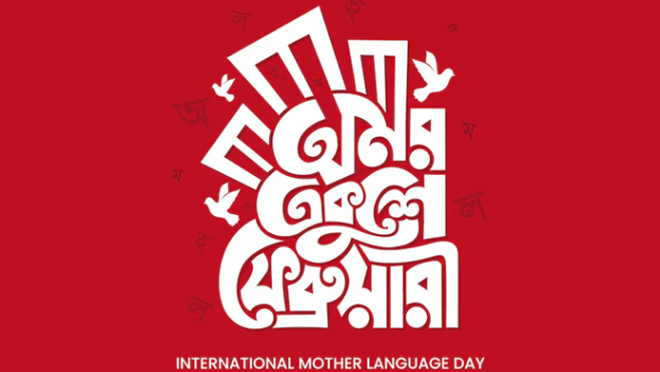Preserving the soul of Bangla: Celebrating dialect diversity on International Mother Language Day
Preserving the soul of Bangla: Celebrating dialect diversity on International Mother Language Day

When Abdul Latif wrote “Ora amar mukher bhasha kaira nite chay,” he was certainly not just speaking of a singular, standardised Bangla. ‘Mukher bhasha’—spoken language—lives through countless dialects spoken across the land, each contributing to the true essence of our mother language.
Every year, as we celebrate International Mother Language Day, rooted in our sacrifices made during the 1952 Language Movement, a quieter struggle often goes unnoticed, which is the marginalisation of Bangla’s diverse dialects in favour of one dominant form.
The universality of the day
International Mother Language Day is unique in its universality. Unlike national or religious holidays, it goes beyond race, religion, and borders, celebrating the right to speak their native tongue. Whether spoken by millions or a small minority, written in letters or only verbal, it’s an occasion to appreciate linguistic diversity.
However, in Bangladesh, the birthplace of this global observance, the spirit of universality often gets overshadowed by a narrow focus on standard Bangla, sidelining the many dialects that make up the country’s diverse representation.
The historical context of standard Bangla
Bangladesh is often seen as a linguistically homogeneous nation, but this is far from the truth. The country is home to many ethnic groups like the Santals, Chakmas, and Garos, each with its own language. Bangla itself is not a singular, uniform language but rather a continuum of diverse regional dialects, some so distinct like Sylheti and Chatgaiya that they often seem like entirely separate languages.
This diversity developed over centuries through migration, colonisation, and globalisation. However, the variety spoken in the Nadia and Murshidabad regions, which was once just one among many, acquired institutional power and became standardised, often to the detriment of other regional dialects.
The stigma against dialects
The dominance of standard Bangla has led to the stigmatization of regional dialects. The former is called “shuddho” Bangla (pure Bangla) or “bhalo” Bangla (good Bangla), establishing the idea that other forms of speech are impure and flawed. The bias that standard Bangla is the only “correct” or “educated” form creates a hierarchy.
Speakers of dialects frequently face judgement, being told to “speak properly,” or even mocked in classrooms, workplaces, and media. Many feel pressured to abandon their linguistic heritage to be taken seriously. Younger generations grow up ashamed of their dialects and prefer to use standard Bangla, leading to the slow erasure of these linguistic identities.
The cultural cost of dialect loss
The neglect of dialects is not just about language but culture. Each variety carries the history, traditions, and experiences of its speakers. For instance, folk songs like Bhatiali from river communities and Baul songs from rural Bengal reflect regional dialects and the lives of their people.
Similarly, traditional Puthi (oral narratives) and works like “Maimansingha Gitika” were narrated in regional variations of Bangla, preserving the everyday speech and cultural stories of past generations. These dialects are a rich part of Bangla’s literary and cultural heritage, but as they fade, so do our unique expressions.
A call to action on International Mother Language Day
Ekushey Padak and Swadhinata Padak award-winning actor and stage artist Ataur Rahman stresses the need to document these dialects, following the path set by Dr. Shahidullah. He remarks, “Regional languages should be treated with the respect they deserve, as they are the language of the home.”
To protect these variations of Bangla, we must encourage their use in literature, music, and daily conversations. Linguists and activists are documenting endangered dialects, and technology helps speakers share their language, challenge stigma, and foster pride. Supporting such efforts ensures Bangla remains diverse and vibrant, reflecting the richness of its people. So today, alongside honouring the martyrs of 1952, let’s pledge to protect the rich diversity of Bangla’s dialects, protecting its colourful soul for generations to come.


